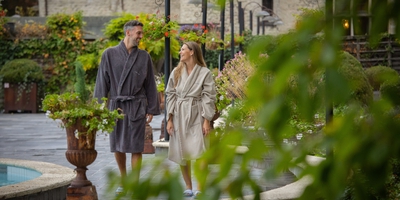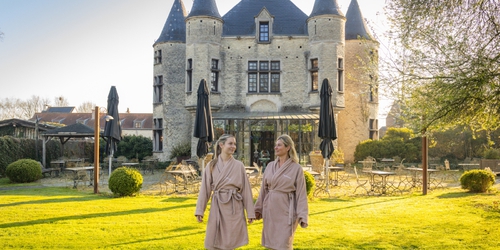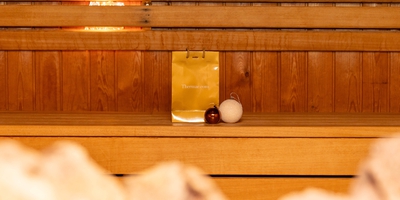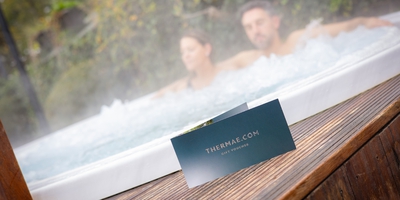From painter Jacques Hannibal to the Van der Zypen family, every owner has left their mark on this unique water castle just outside Brussels.
Castle origins: a walled farmstead
Before 1581, a walled farmstead – a fortified farm with moat and drawbridge – occupied the site where Thermae Boetfort is now situated. On 15 April 1581, Jan Thielemans sold the estate to Jacques Hannibal, a painter from Brussels who also renovated the Church of St Rumold in Steenokkerzeel from 1589 to 1598.
1594-1610: the Madoets family
On 20 December 1594, the castle was sold to Hendrik Madoets and his wife Margareta van Zuene. Hendrik was an alderman and supply commissioner in Brussels, a prominent position in those days.
When they bought Boetfort Castle, it was a ruin. Between 1595 and 1610, it was completely rebuilt in white sandstone from Diegem, with four round corner towers. The 1610 date-anchors on the wall are a reminder of that time.
The castle is believed to have been used as a hunting lodge back then and rumour has it that even Louis XIV stayed here once.
The Madoets had four children: Peter, Karel, Isabella and Catherina and also owned the nearby Hof ten As.
18th century: Count of Tirimont
In 1724 or 1728, Boetfort Castle was bought by the Count of Tirimont, a local nobleman and lord of Gaasbeek.
He held high-ranking positions in the Spanish Netherlands, was ambassador for Charles II of Spain and was given the title of Count of Tirimont in 1690.
The count bought Boetfort Castle as a speelhuys, a second home where he would hunt, dine and relax with family and guests. Inside, tapestries and paintings adorned the walls and the parlours oozed sophistication.
Today, in the restaurant of Thermae Boetfort, you can still find some of the original tapestries. Unfortunately, they were painted over by one of the previous owners, but we think they are stunning nevertheless. During the renovation works, we did everything we could to preserve them so you can admire them today.
18th century: Henri Hospies
In the second half of the 18th century, the castle was acquired by Henri Hospies, a merchant from Brussels.
He added a private chapel in one of the towers, which is still in existence and actively used today. According to our big boss, this chapel protects the building: during the five years of renovation works, everything ran amazingly smoothly. There is still a burning candle in the chapel today and one of his grandchildren was baptised in it.
Hospies left his mark on Boetfort Castle with a few more additions:
in 1767, a gate tower was erected in Louis XV style with coach houses
and in 1773, a risalit was added, where the current reception building is situated.
A procession of owners in the 19th century
At the beginning of 19th century, the castle was briefly owned by Count de Lalaing, an old South-Dutch aristocratic family.
Around 1831, the castle part came into the hands of Jean Bregnier while the farmstead was possibly owned by someone else. The estate covered roughly two hectares in those days.
In 1838, Count Prosper O’Kelly, of Irish descent, became the new owner. He had the farmstead demolished and redesigned parts of the estate.
Around 1880, Boetfort Castle came into possession of Armand Steurs
Brussels lawyer Armand Louis Jean Steurs bought Boetfort Castle around 1880. He was mayor of Saint-Josse-ten-Noode, senator and provincial councillor of Brabant. Under his ownership, the estate gained a new service building with coach house, conservatory and aviary.
He also had a vegetable garden laid out and a gardener’s house built, which gave Boetfort Castle a romantic, rural feel.
Around 1880, the moat was also filled in.
Around 1907, Henri Dereine inherited Boetfort Castle
In 1907 or 1908, the castle passed to Henri Dereine, lawyer, painter and son-in-law of Armand Steurs. He renovated Boetfort Castle with the help of famous Brussels architect Abbeloos. The main things he introduced were:
- A new entrance and gatehouse in neo-Gothic style.
- The creation of a 1.37-hectare park with serpentine pond (meandering like a natural river). This pond is still on the estate today, situated between the Castle sauna and Ice Cave sauna.
- The construction of the part of the building where the restaurant is now located.
Boetfort Castle was heavily damaged during WWII but the Dereine family completely restored it.
20th century: from restaurant to ruin
In the second half of the 20th century, the castle housed a restaurant. After this went bankrupt, the building was left to decay, with water leaking through the roof, for instance, and a tree growing in what today are the offices.
From 2006: the Van der Zypen family give the castle a new lease of life
In 2006, the Van der Zypen family bought the estate and began painstaking renovations. The goal: to restore the estate and create a unique wellness experience, while respecting the past. Original tapestries, paintings and historic details were preserved and new spa facilities were discreetly integrated.
In 2007, the castle received listed building status.
After four years of renovation, Thermae Boetfort opened its doors on 1 May 2010. Today, the castle combines history and relaxation: from saunas and baths to hotel rooms, private saunas, massages, treatments and culinary enjoyment in the restaurant.



